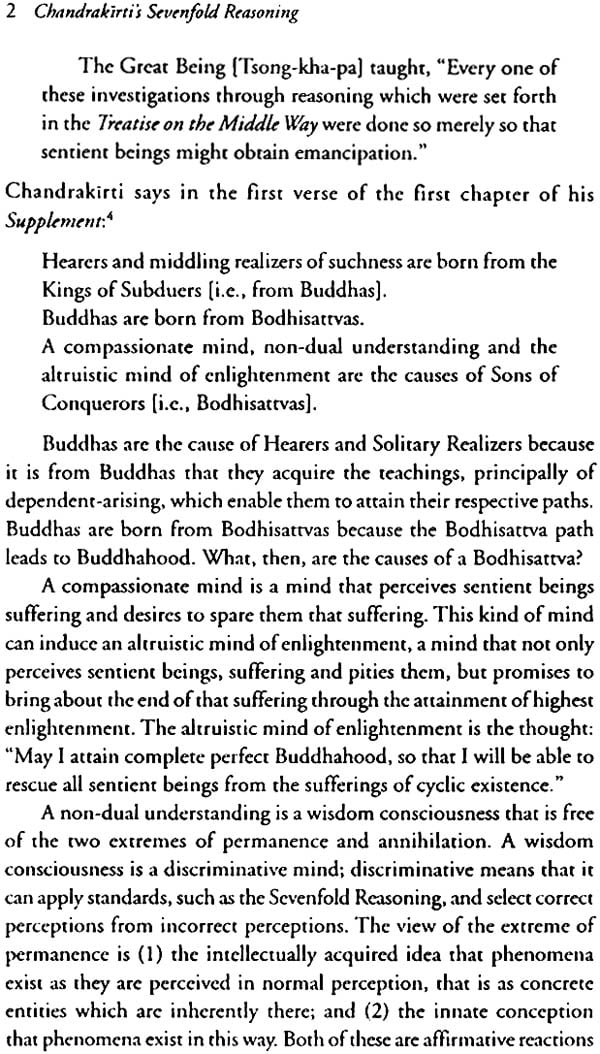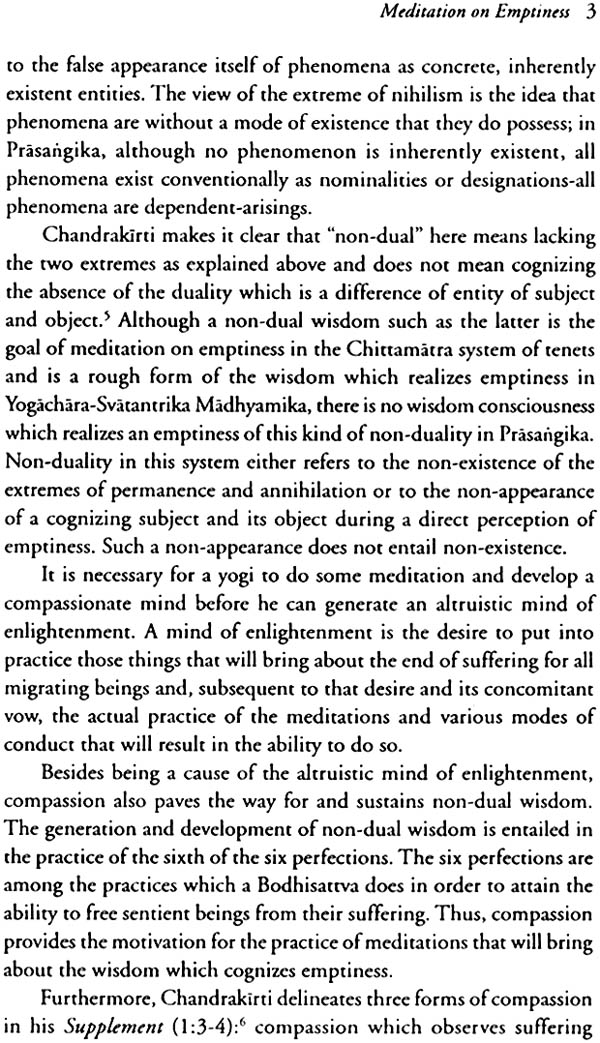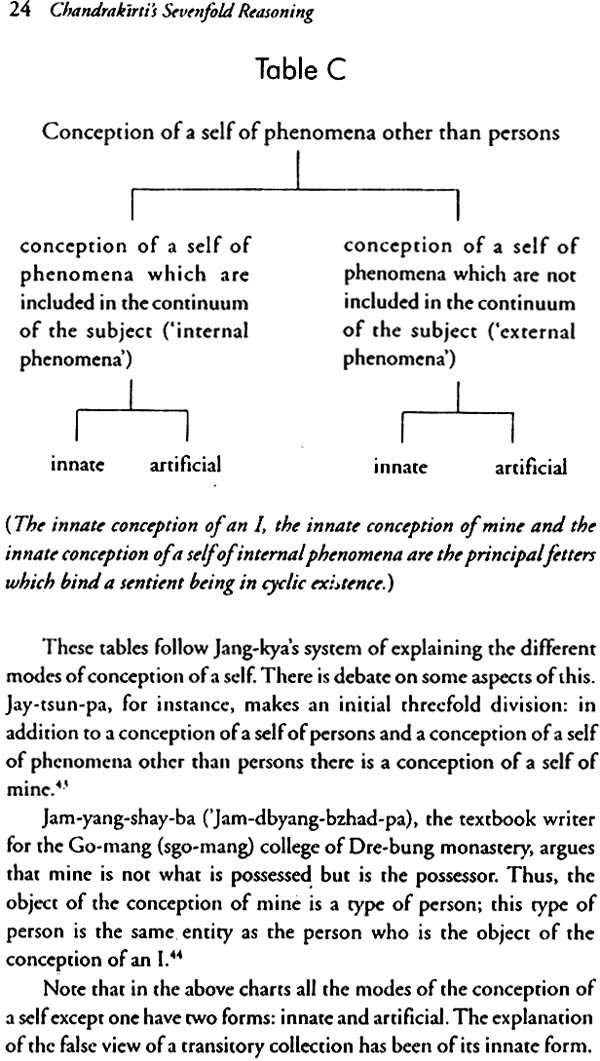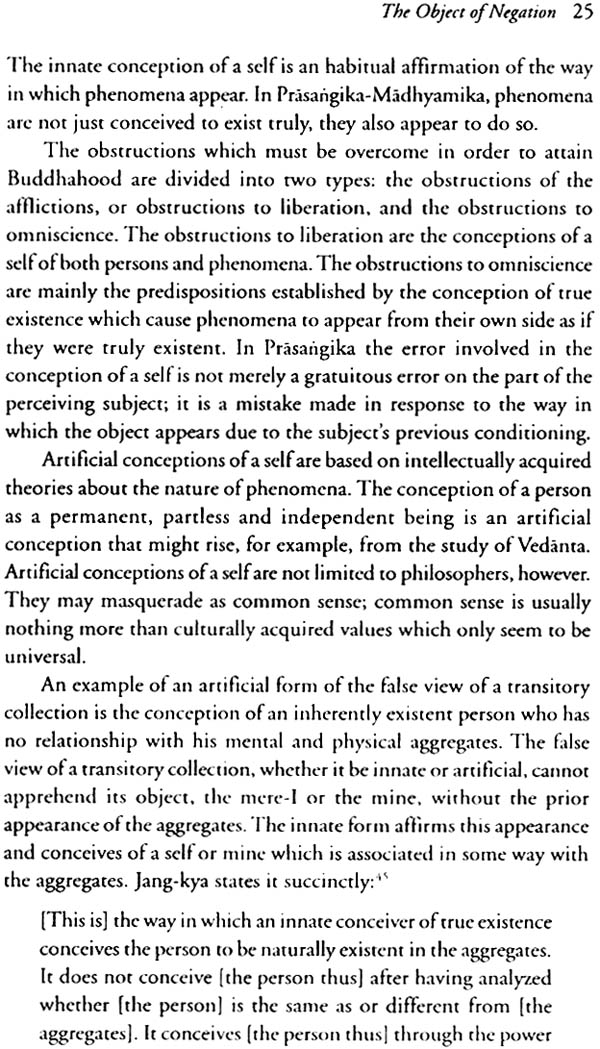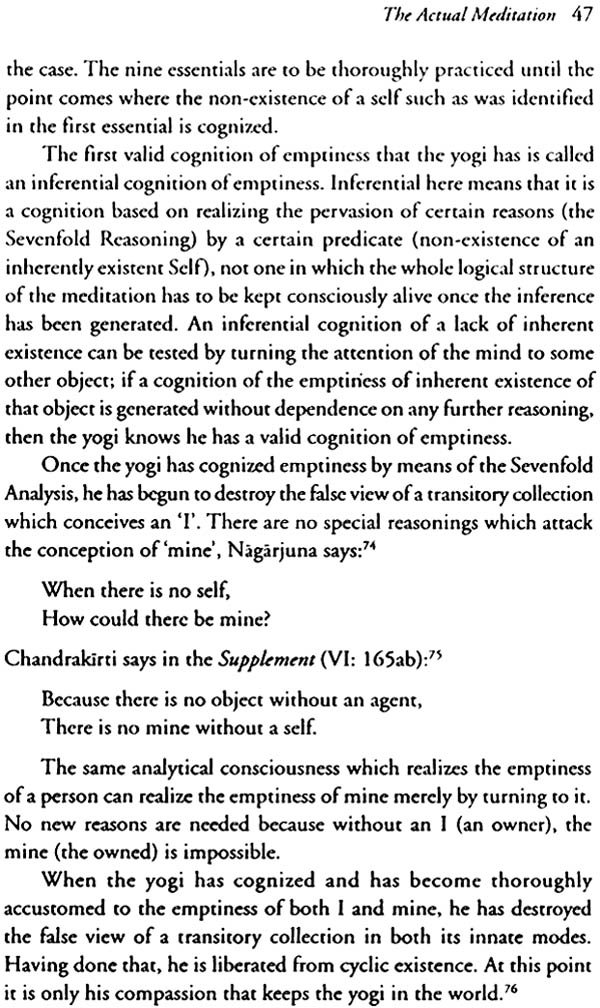
Chandrakirti's Seven Fold Reasonsing (Meditation on the Selfness of Persons)
Book Specification
| Item Code: | IDK537 |
| Author: | Joe Wilson |
| Publisher: | Library of Tibetan Works and Archives, New Delhi |
| Language: | English |
| Edition: | 2006 |
| ISBN: | 8186470492 |
| Pages: | 64 |
| Cover: | Paperback |
| Other Details | 8.5" X 5.5" |
| Weight | 90 gm |
Book Description
This explanation of Chandrakirti's presentation of the Sevenfold Reasoning is based on that found in the Clear Exposition of the Presentation of Tents, a Beautiful Ornament for the Meru of the Subduer's Teaching composed by jang-kya. In this small volume, Joe Wilson includes an explanation of the context of the Sevenfold Reasoning in Buddhist Philosophy as a whole.
Chandrakirti represents the Prasangika-Madhyamika school of philosophy, which is reviewed in the Gelugpa presentation of Sutra and Tantra as the highest system, or most correct system, for explaining phenomena and the way in which they exist. This book explores its essential and complex subject in depth for the benefit of all readers making a detailed investigation of the Buddhadharma
One of the principal texts used in the study of Madhyamika philosophy in Tibetan Buddhism is Chandrakirti's Madhyamakavatara, the Supplement to (Nagarjuna's) "Treatise on the Middle way". Chandrakirti represents the Prasangika Madhyamika school as opposed to the Svatantrika-Madhyamika school of Bhavaviveka, Shantarakshita and so on. In the Gelukpa presentation of Sutra and Tantra, Prasangika philosophy is the highest system, i.e., the correct system, of explaining the phenomena of the world and the way in which they exist. The viewpoint of the Prasangika system is thus the basis for practice in both the Vehicle of the Perfections and the Vehicle of the Secret Mantra, the one following Buddha's Sutra teaching and the other following his Tantric teachings.
The main body of the Supplement is divided into 10chapters, each chapter dealing with one of the 10Bodhisattva stages. Each of these stages has a particular perfection associated with it. Thus, the first chapter deals with the actions and concerns of a Bodhisattva from the time he begins to practice, through his actual entry into the path of the Great Vehicle and up to and including his attainment of the first Bodhisattva ground and the perfection emphasized at that time, which is giving or generosity.
The sixth chapter describes the perfection of wisdom and is by far the longest in the Supplement, consisting of 226 verses. Forty-seven of those verses (verses120 to 167) deal directly with the method of meditation which will be described here.
Because this paper is a somewhat more modest undertaking than that which would be required for a treatment of so large a portion of text, I intend to confine myself mainly to an explanation of Chandrakirti's presentation of the Sevenfold Reasoning found in the Clear Exposition of the presentation of Tenets, a Beautiful Ornament for the Meru of the Subduer's Teaching of Jang-kya (lcang-skya Hu-thog-thu Ye-shes-bstan-pa'i sgron-me; 1717-1786) along with an explanation of the context of the Sevenfold Reasoning in Buddhist philosophy as a whole. The presentation of Tents is a moderately detailed, systematic exposition of the tents of the Buddhist and non-Buddhist philosophical schools of India as they are preserved in Tibetan religions culture.
Jang-kya's presentation of the Sevenfold Reasoning is clear and concise, as is the rest of the chapter on the system of the Prasangika-Madhyamika. He first outlines the sources of this from of reasoning in Sutra and in Nagarjuna's Fundamental Stanzas on the Middle Way Called "Wisdom" (Prajnanama-Mulamadhyamakarika). Then he present the Sevenfold Analysis as it is stated when the analogue of a chariot and its parts is used to exemplify a person and his aggregates. Having done that, he states the reasoning as they apply to a person He closes with the explanation of way in which a person, through completely without inherent existence, is still nominally existent.
| introduction | v |
| Chapter One | |
| The Place of Meditation on Emptiness in Buddhist Practice | 1 |
| Chapter Two | |
| The object of Negation the Conception of a Self | 9 |
| Chapter three | |
| The Actual Meditation: the Sevenfold Reasoning | 29 |
| Notes | 49 |
| Glossary | 53 |
| Bibliography | 57 |
